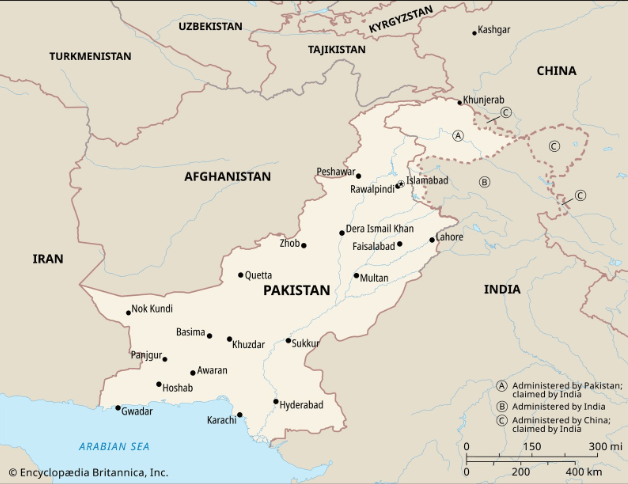
massive bilateral project to improve infrastructure within Pakistan for better trade with China and to further integrate the countries of South Asia. It is part of the larger Belt and Road Initiative (BRI) to improve connectivity, trade, communication, and cooperation between the countries of Eurasia announced by China in 2013.
The project was launched on April 20, 2015, when Chinese Pres. Xi Jinping and Pakistani Prime Minister Nawaz Sharif signed 51 agreements and memorandums of understanding valued at $46 billion. The goal of the CPEC is both to transform Pakistan’s economy—by modernizing its road, rail, air, and energy transportation systems—and to connect the deep-sea Pakistani ports of Gwadar and Karachi to the Xinjiang Uygur Autonomous Region in China and beyond by overland routes. (Xinjiang borders the countries of Mongolia, Russia, Kazakhstan, Kyrgyzstan, Tajikistan, Afghanistan, Pakistan, and India, and the ancient Silk Road ran through its territory.) This aims to reduce the time and cost of transporting goods and energy such as natural gas to China by circumventing the Strait of Malacca and the South China Sea. The initiative was also set to open several special economic zones (SEZs), modeled on similar zones in China that offer incentives for investment and are intended to spur rapid economic growth. The announcement of joint space and satellite initiatives between Pakistan and China, spurred by the CPEC, followed in 2016.
By the end of the 2010s, the program had achieved a number of successes for Pakistan, particularly in terms of infrastructure. Hundreds of miles of highways and railways had been completed. Pakistan’s capacity for electric power generation had also increased dramatically; although renewable energy made up only a fraction of the new energy projects, the country’s first solar power plant was inaugurated in May 2015. The Orange Line Metro Train system in Lahore, launched in October 2020 and the first of its kind in the country, was the most lauded urban project to come out of the early CPEC program.
But the CPEC initiatives proved to be a significant burden on Pakistan’s already strained balance of payments. Five years into the program, debt owed to China made up more than one-fourth of Pakistan’s total debt as it struggled to make its external payments. The economic impact of the global COVID-19 pandemic also slowed progress on CPEC projects, exacerbated Pakistan’s economic crisis, and left China hesitant to grant leniency on debt payments. Although the project gave a boost to job creation in Pakistan, promises that it would bolster Pakistan’s industrial sector and increase exports remained largely unrealized into the early 2020s. And even though the CPEC had expanded energy infrastructure, the costs for fossil fuel and upgrading an aging power grid led to continued power shortages and failures throughout the country. Furthermore, some construction, especially in the province of Balochistan, faced setbacks from violence by local militants who were opposed to the CPEC projects in their area.






